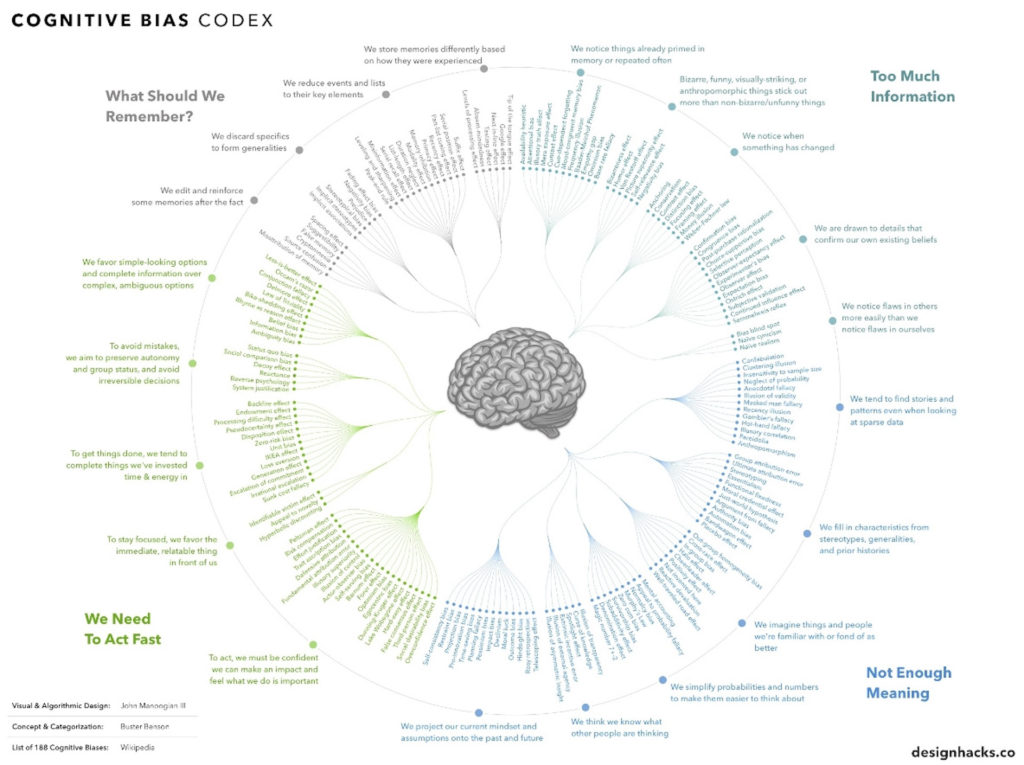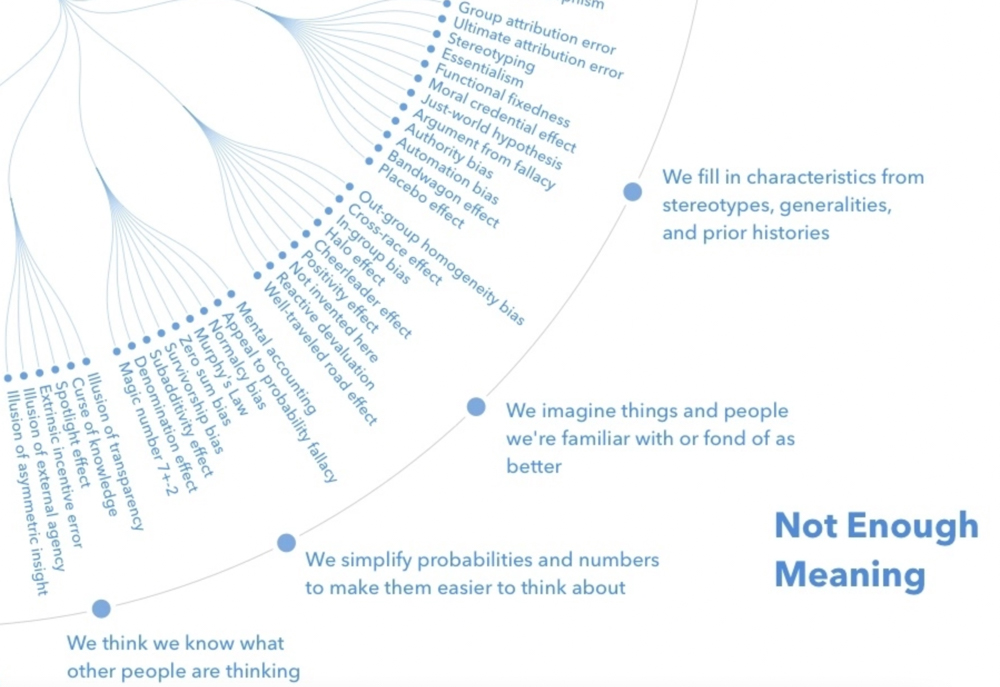Last year, we published a six-part series of tips about different kinds of cognitive bias and how to be aware of, and counter against, these biases in our evaluations. (Read the first post in that 2021 series here. Search “cognitive bias” on our #EvalTuesdayTips page to read all six posts.)
As a follow-up to that series we’re sharing this fantastic infographic, the “Cognitive Bias Codex”, from DesignHacks.co. The infographic depicts a massive wheel (the high-resolution graphic is wider than most computer screens) showing every known type of cognitive bias, grouped by category.

“Science has shown that we tend to make all sorts of mental mistakes, called ‘cognitive biases’, that can affect both our thinking and actions,” writes Jeff Desjardins of VisualCapitalist.com in an article about the Cognitive Bias Codex. “To be sure, this is all part of being human—but such cognitive biases can also have a profound effect on our endeavors, investments, and life in general.”
The outer circle of the Cognitive Bias Codex includes a few broad categories of bias – “Not Enough Meaning”, for example – and drills down to more specific actions, like “We simplify probabilities and numbers to make them easier to think about.” Within each of those categories are multiple types of cognitive bias, like “Normalcy bias”, “Appeal to probability fallacy”, and “Murphy’s law”. Being aware of these biases is crucial in evaluation. The more we understand about cognitive biases, the better we are able to counteract them and produce more authentic findings and recommendations.

A slice of the Cognitive Bias Codex.
Besides being endlessly fascinating, the Cognitive Bias Codex is a great reminder of the fallibility of the human mind and how we should always check our own conclusions.